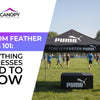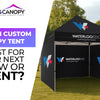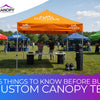Ultimate 10×10 Canopy Tent Guide: Setup & When to Upgrade

When it comes to the best outdoor canopy, a 10×10 canopy tent remains a top pick. It offers enough room to promote your business clearly without straining your budget and requiring a large crew. Whether you are setting up at a neighborhood market or a national expo, this canopy size strikes a balance between portability and promotion. Additionally, it is easy to customize according to your logos, colors, and messaging.
That said, growth brings new demands. As your presence improves, so should your footprint. This discussion explores layout configurations, seating capacity, transport logistics, and clear indicators that are required for your branding. Whether you are a new business in any events or a seasoned exhibitor, optimizing your space can elevate both the experience and your impact.
Understanding the 10×10 Canopy Tent Size
A. Physical Dimensions and Coverage
At 100 square feet, a 10×10 tent with canopy gives you just enough room to promote your business without any effort. It is considered the standard event size for a reason. The reason is that it is enough for a table, signage, and foot traffic. It complies with your goals without stressing about parking space or setup rules.
B. Height Considerations
Most models peak around 10 feet tall, but the true usable space is what sits below the valance—typically 6.5 to 7 feet high. That’s enough clearance for most customers to walk freely, and for you to hang banners or run lightweight lighting kits without feeling boxed in.
Quick Notes on Height:
-
Peak height: ~9–11 feet
-
Head clearance: ~6.5–7 feet
-
Great for hanging signage or clip-on lighting
-
Keeps airflow comfortable for guests
Seating Capacity Under a 10×10 Canopy Tent
A. Seating Without Tables
Going table-free opens up the tent’s full potential. Think of it like a gallery—ideal for quick chats, free samples, or pop-up photo moments. Without furniture in the way, up to 8–10 people can stand comfortably, including staff and curious passersby.
Best for:
-
Sampling stations
-
Mobile app promos
-
QR code scan booths
-
Casual meet-and-greet sessions
B. Seating With Tables
Once you add a table, the space tightens. A single 6- to 8-foot table leaves room only for a few chairs, nothing much. That layout is great for transactions or brochures, but you’ll need extra space for extra things.
|
Layout Style |
Staff |
Guests |
Furniture |
|
No tables |
2 |
6–8 |
Open floor plan |
|
1 table (front) |
2 |
2–4 |
Table + chairs |
|
Booth + display |
2–3 |
2–3 |
Table + standees |
C. Activities and Layouts
Every brand activates space differently. You might be selling products, collecting leads, or hosting demos. That’s why many vendors design in “zones”—greeting at the front, action in the middle, and storage behind a skirted table or branded backdrop.
Smart Layouts to Try:
-
Front-facing sales with side storage
-
L-shaped consultation and product combo
-
Back-wall display with open-floor center
-
Table in front, banners behind
IV. Setup Considerations
A. Ease of Setup
If you’ve got two people and a bit of practice, a 10 x 10 pop up tent goes up in under 10 minutes. Most models are tool-free, but it helps to test it at home once before event day. Pro tip: Pack duct tape, zip ties, and extra clips—just in case.
B. Anchoring and Weather Protection
Even a calm day can surprise you. Most event hosts require weights—usually 20 to 40 lbs per leg. Water barrels work, but sandbags or steel plates are quicker. For wind or light rain, go for sloped roofs, gutter kits, and side panels that close quickly.
Setup Must-Haves:
-
4× 20–40 lb leg weights
-
Sidewalls or drapes for wind/rain
-
S-hooks or clips for signage
-
Velcro or ties for securing table covers
C. Transportation and Storage
The best part? A 10 x 10 pop up canopy folds down small. It’ll fit in most hatchbacks or mid-size sedans. Keep sidewalls, banners, and tools in a labeled storage bin so setup doesn’t become a scavenger hunt. And always check the wheels on your tent bag, event terrain isn’t always smooth.
V. When to Go Bigger: Signs You Need More Space
A. Number of Guests or Vendors
Feeling shoulder-to-shoulder with customers? That is the indicator of the right time to scale. If you’re partnering with another vendor or drawing a crowd that clogs the entrance, you can consider some other options like a 10×15 or even 10×20 canopy. It keeps the energy flowing and the brand impression strong.
B. Equipment/Storage Needs
If you have display racks, product bins, and backup signage, and all of that is hiding behind your main table, your booth may feel messy. A bigger tent with canopy gives your gear breathing room. It also lets your team move behind the scenes without interrupting the customer experience.
C. Comfort and Air Circulation
On warm days and in crowded expos, air flow becomes more than any comfort issue. It actually affects sales. If guests are sweating or crammed, they’ll move on. A larger canopy improves spacing, reduces heat buildup, and makes people want to linger longer.
More Tent, More Comfort:
-
Less crowding = longer engagement
-
Better airflow = happier guests
-
Cleaner presentation = stronger brand
D. Multi-Purpose Use
Need space for demos, conversations, and selling? It’s tough to do it all in a 10×10. With a larger setup, you can separate functions—place your checkout at one end, and host product trials or sign-ups in another zone.
E. Future-Proofing Your Purchase
If you’re planning more than three or four events a year, it’s worth investing in the bigger frame now. Most 10×15 or 10×20 setups have similar folding styles and weight. With a larger footprint, your booth becomes more than just a table—it becomes a destination.
Alternatives to the 10×10 Canopy Tent
A. Popular Next Sizes
Going from 100 to 150 or 200 square feet gives you new layout options. You can have an L-shape, double branding, or even customer seating. Best of all? Larger tents are still pop-up friendly, so you won’t need a crew just to raise the roof.
|
Size |
Ideal For |
Sq. Ft. |
Setup Time |
|
10×10 |
Basic vendor booth |
100 |
~10 min |
|
10×15 |
Demos + product tables |
150 |
~15 min |
|
10×20 |
Retail + engagement zone |
200 |
20–30 min |
B. Modular Options
Sometimes, buying two 10×10 tents with canopies works better than one big one. You can link them with zippered rain gutters or place them side by side for mirrored branding. That way, you stay flexible, use one for smaller shows, or combine both when the foot traffic is wild.
Why Modular Works:
-
Adaptable to different booth sizes
-
Easy to store separately
-
Split for dual brands or services
-
Link together when needed
Choose a custom tent with canopy that fits your brand with us at Express Canopy. Request your quote today.
Final Thoughts
A 10×10 tent with canopy is a smart starting point for most promotional setups. It must deliver the essentials like weather resistance, brand visibility, and versatile design. They must be lightweight and easy to transport. It should fit the format of most standard events. It will make it a go-to option for small businesses and weekend vendors aiming to make an impact without overcomplicating their setup.
But convenience doesn’t always equal capacity. When your booth feels crowded, is the right time to grow your business. Expanding to a 10×15 or combining multiple tents gives you room to breathe, improving traffic flow, engagement, and overall presence. A well-sized booth doesn’t just serve a purpose; it amplifies it.
Frequently Asked Questions
1. Is a 10×10 canopy big enough for two vendors sharing a booth?
It’s possible but tight. If you are sharing, you have to use vertical displays and avoid bulky setups. Options like two tables back-to-back or an L-shape layout can work, but they can confuse your visitors. For comfort and cleaner presentation, consider a 10×15 or modular double-tent option.
2. Can I use a 10×10 canopy tent at indoor events?
Yes. There are many indoor expos and trade shows that offer 10×10 booth spaces. You can check the venue height restrictions, especially for taller tents. In most cases, you will be using the frame without a roof and branding at the back wall or side panels.
3. What type of branding works best on a 10×10 canopy?
Branded canopy tops, back walls, and table covers are key branding elements. You can use high-contrast logos. You should keep your message short and ensure it's readable from a distance. Feather flags and retractable banners placed outside the tent can help you extend your visual reach without crowding your canopy tent.
4. How much wind can a 10×10 tent handle?
Top-quality pop-up canopies can handle winds up to 20–25 mph with proper anchoring. You must use weighted bags (20–40 lbs per leg), sandbags, and water barrels. You should also avoid setting up in open areas during storms. Sidewalls should be rolled up to prevent wind trapping.
5. Is it better to rent or buy a canopy for events?
Renting is fine for one-off events, but frequent vendors save more by buying. A custom-branded 10×10 tent pays off after 3–4 uses. It also gives you full control over layout, design, and quality, important when your booth represents your business image.

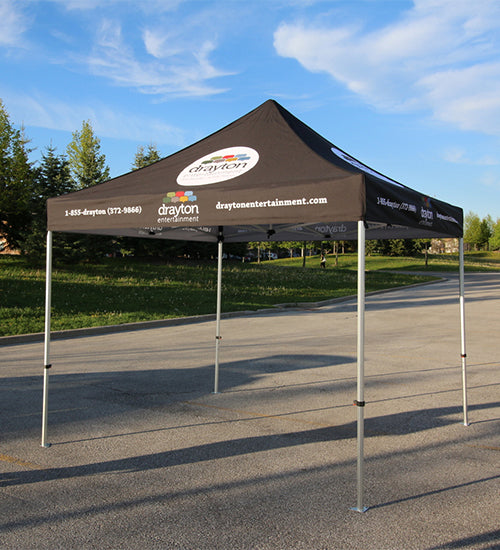
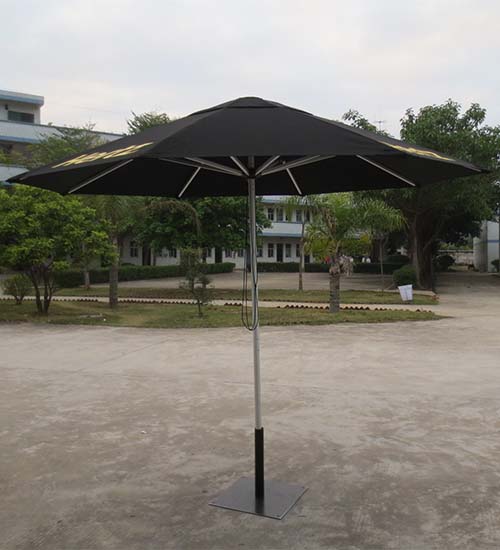
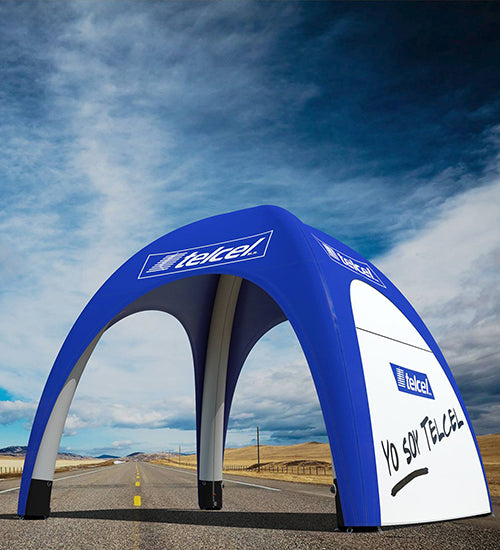
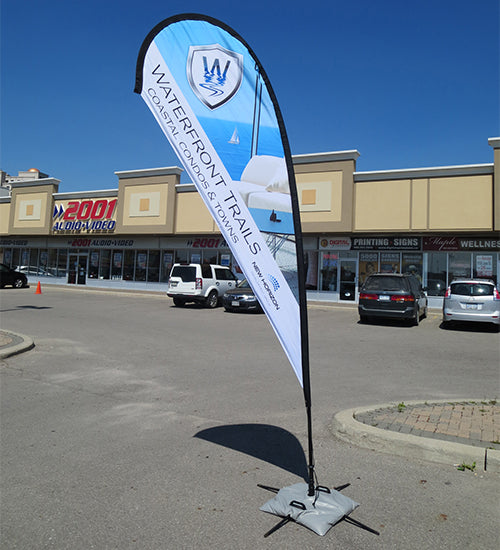
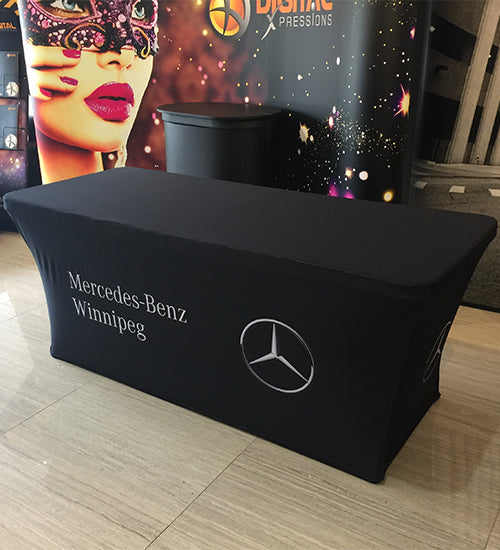
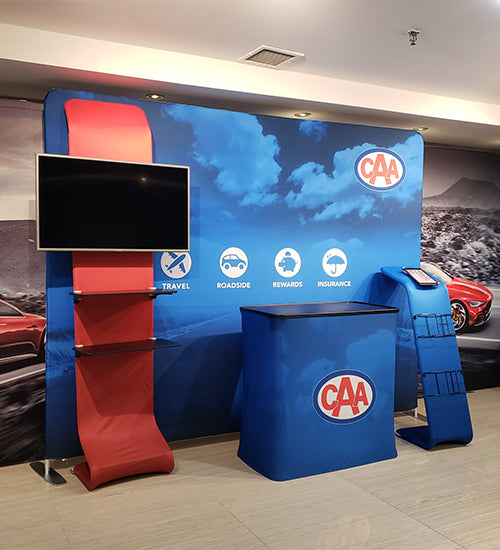
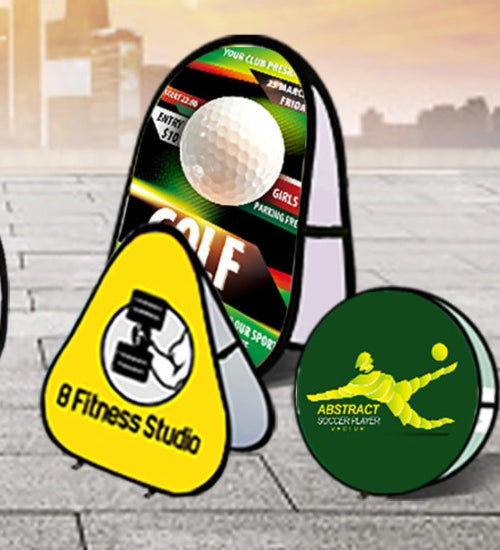
 UPLOAD FILES
UPLOAD FILES